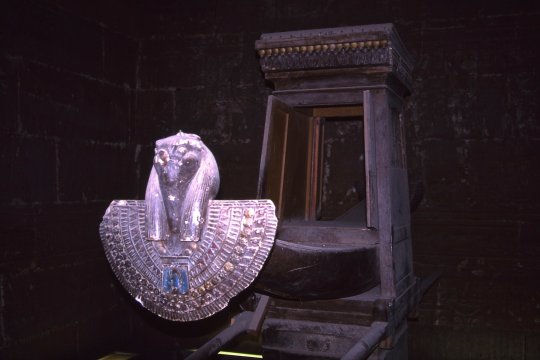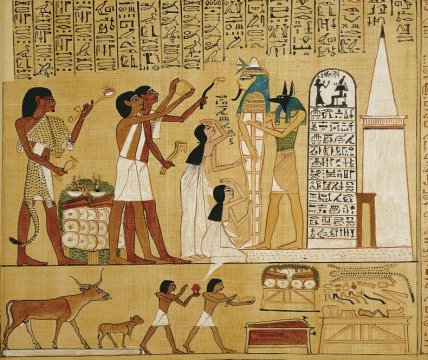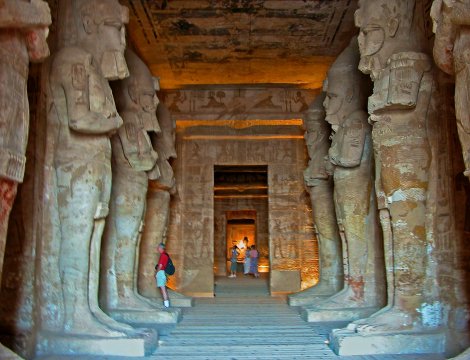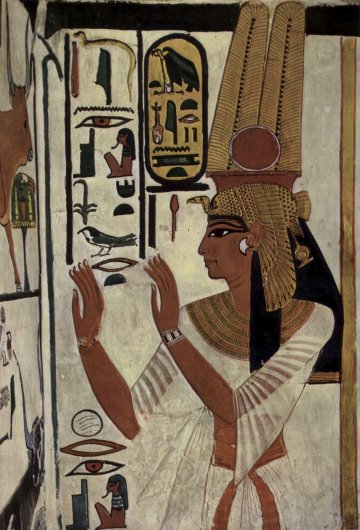|
John Tyman's Cultures in Context Series EGYPT and the SAHARA www.johntyman.com/sahara |
|
3.1 Religion of the Pharaohs - Part II: 146-164 |
| . |
|
John Tyman's Cultures in Context Series EGYPT and the SAHARA www.johntyman.com/sahara |
|
3.1 Religion of the Pharaohs - Part II: 146-164 |
| . |
 |
| .146. At Edfu they have a barque (or a reproduction of the same) ... a wooden carriage in which the statue of their god (in their case Horus) would have been taken out of the temple during festivals. |
 |
| 147. The pharaohs and their subjects believed in an after-life, and that the soul of the dead dwelt near its body. Graves were equipped accordingly -- with food, tools, toiletries etc. In this painting the priest touches the facemask of the mummy with a series of implements, symbolically unstopping the mouth, eyes, ears and nostrils so the corpse can regain its faculties. (BritishMuseum.org) |
 |
| .160. The outer hypostyle hall of Ramses’ temple is supported by eight columns fronted by statues of a god-like pharaoh. Beyond it there is a second pillared hall, and beyond that the sanctuary. (Courtesy Dennis Jarvis at Wikipedia ) |
 |
| .163. Ramses II had seven wives/consorts but Nefertari was his favorite. She is shown here wearing the plumed tiara of Amon and the solar disc of Ra. (Wikipedia) |

![]()
Text and photos by John Tyman
unless otherwise indicated.
Intended for Educational Use
Only.
Contact Dr. John Tyman at johntyman2@gmail.com
for more information regarding
licensing.
![]()
www.hillmanweb.com
Photo processing, Web page layout,
formatting and hosting by
William
Hillman ~ Brandon, Manitoba ~ Canada